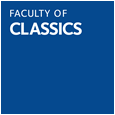Il contributo presenta i risultati degli scavi che la Missione delle Università di Messina e di Oxford conduce dal 2017 sulla collina settentrionale, nell’area sacra probabilmente identificabile con il Santuario di Apollo. Gli scavi stanno riportando alla luce un complesso formato da tre edifici allineati, che si innalzano su una grande piattaforma rettangolare alta 3,45 m; almeno l’edificio centrale, di dimensioni maggiori, va identificato con un tempio. Alla piattaforma si accedeva mediante una rampa sul lato sud, in corrispondenza del punto di arrivo di un asse viario che dalla città risaliva fino al santuario. I dati acquisiti inducono a collocare la monumentalizzazione del complesso nel corso del II sec. a.C. Le fonti letterarie ed epigrafiche, tuttavia, testimoniano l’esistenza del santuario già in epoca più antica, ma di queste fasi precedenti gli scavi hanno finora restituito solo scarse testimonianze, perché con ogni probabilità esse sono state obliterate dalla imponente ristrutturazione tardo-ellenistica.
The paper presents the results of the excavations that the Mission of the Universities of Messina and Oxford has been conducting since 2017 on the Northern hill, in the sacred area probably identifiable with the Sanctuary of Apollo. The excavations are bringing to light a complex formed by three aligned buildings, which stand on a large rectangular platform 3.45 m high; at least the larger central building must be identified with a temple. The platform was accessed via a ramp on the south side, at the point of arrival of a road that ran up from the city to the sanctuary. The data acquired lead us to place the monumentalization of the complex during the second century B.C. The literary and epigraphic sources, however, testify to the existence of the sanctuary already at an earlier date, but the excavations have so far yielded little evidence of these previous phases, probably because they have been obliterated by the impressive late Hellenistic restructuring.
Hellenistic archaeology
,Greek Sicily
,Roman Sicily
,Sicily
,archaeology
,ancient religion
,Greek archaeology
,urbanism



